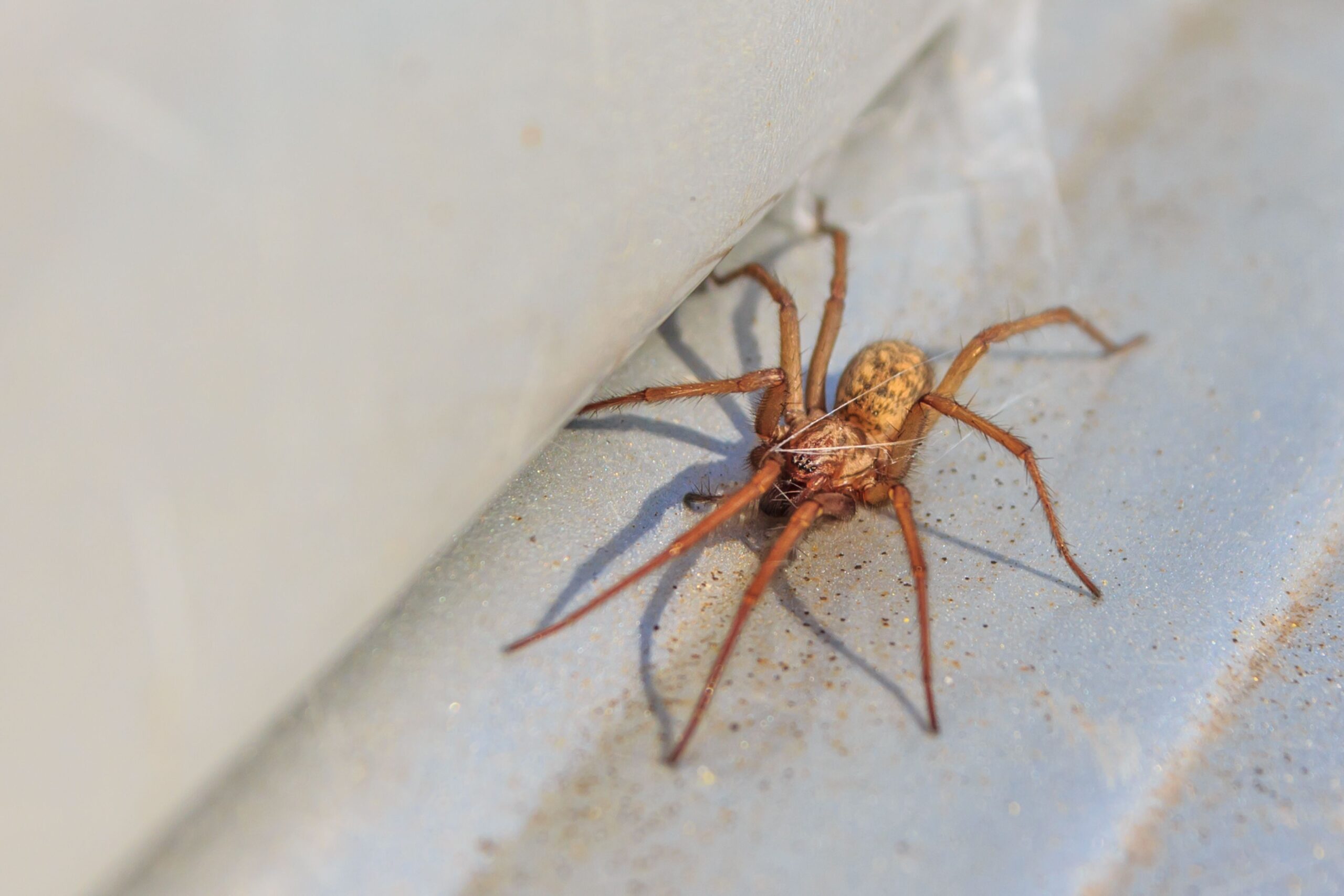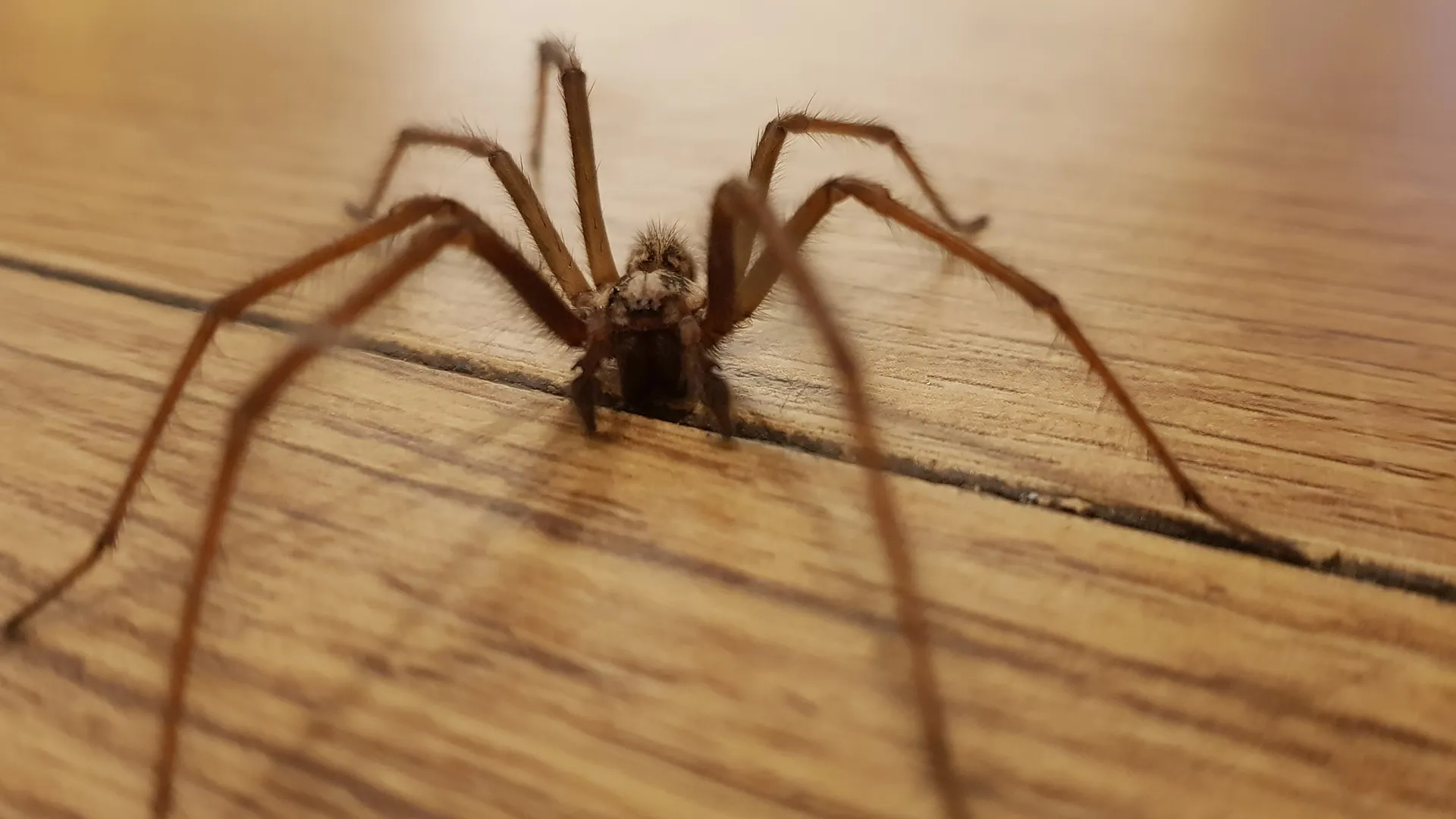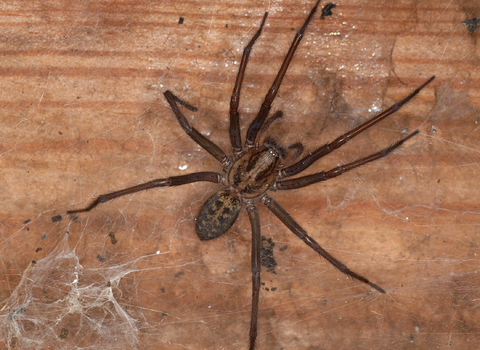Spider Treatments in Florida:
Exterminator Services for Bradenton, Parrish, and Palmetto
Florida’s subtropical climate – marked by warm days, mild winters, and ample humidity – makes it an appealing environment for humans and insects alike. However, where insects abound, spiders often follow. Although spiders can be beneficial, feeding on flies or mosquitoes and helping maintain a natural balance, they can also unsettle residents or pose potential risks if venomous species appear near living spaces. In communities like Bradenton, Parrish, and Palmetto, an unwelcome spider infestation may develop in garages, under eaves, or even inside rooms if left unchecked. This service page explores why spiders flourish in Florida, what signs suggest you need professional help, and how engaging a skilled exterminator for spider treatments can protect your property and peace of mind. By understanding spider behavior and acting proactively, homeowners and business owners stop small inconveniences from escalating into larger arachnid problems.
Why Spiders Thrive in Florida

- Warm, Year-Round Climate
Many parts of the country experience cold winters that reduce spider populations. Florida’s subtropical weather typically spares spiders from these extreme dips in temperature. Lacking a true dormant season, spiders can remain active and breed over a prolonged period, causing population increases if insect prey also remains abundant. - High Humidity and Moisture
Humidity levels in southwestern Florida, often bolstered by rain, create ideal microhabitats for insects that feed spiders. Damp corners of yards or clogged gutters encourage insect development. Spider species that spin webs particularly value areas where moisture lingers, as their prey (mosquitoes, gnats, etc.) congregates around these spots. - Steady Insect Activity
Spiders feed on other pests, so wherever flies, roaches, or moths multiply, spiders generally follow. Because Florida experiences only mild winter breaks, local insect populations never fully go dormant. By extension, spider colonies in Bradenton, Parrish, and Palmetto receive a near-constant supply of food throughout most months. - Suburban and Rural Expansion
Housing developments or farmland transitions can displace spiders from their natural habitats, pushing them closer to homes and businesses. Any overlooked cracks in foundations, windows, or eaves let them move indoors, especially if the building’s interior offers steady temperatures and hidden corners. - Minimal Seasonal Dormancy
In cooler states, spiders may slow reproduction or hibernate. But Florida’s climate rarely forces extended inactivity, meaning spider populations can climb steadily if not addressed. This continuous breeding cycle underscores the need for ongoing vigilance in coastal and inland communities alike.
Common Spiders in Southwestern Florida
- Orb-Weaver Spiders
Known for constructing large circular webs, orb-weavers catch flying insects near lights, windows, or in yards. Although often harmless, their webs can become obtrusive if spun across doorways or high-traffic zones. Some orb-weaver species (like the banana spider) can appear intimidating due to their size and vibrant colors. - Wolf Spiders
These robust, ground-dwelling hunters do not rely on webs to capture prey. Instead, they roam lawns, gardens, or indoor floors at night, pouncing on insects. While not typically aggressive, encountering a wolf spider in a confined space may frighten people unaccustomed to large spiders sprinting unexpectedly. - Widow Spiders (Black and Brown)
The black widow, marked by the classic red hourglass on its abdomen, and the brown widow, which displays a faint orange or yellowish hourglass, produce potent venom. They spin messy, strong webs in sheltered corners—like garages, outdoor furniture, or under eaves. Widow spider bites can be medically concerning, prompting cautious removal or thorough professional extermination if spotted near living areas. - House Spiders and Crevice Spiders
In Florida homes, smaller, brownish house spiders spin webs in corners or behind furnishings. While mostly harmless, their webs accumulate dust and can multiply rapidly if indoor insect prey is ample. Crevice spiders hide in cracks near windows, capturing passing insects at night. - Brown Recluse (Less Common in Coastal Florida)
Brown recluse sightings remain relatively rare in southwestern Florida, though they may appear occasionally via transported goods or secondhand furniture. Noted for a violin-shaped marking on the dorsal thorax, their bite can produce tissue reactions necessitating medical care. Quick identification by an expert is paramount if suspect recluse spiders are found.
Signs of a Spider Infestation
- Excessive Webbing
Spotting multiple or large webs around windows, door frames, or corners suggests spider populations are on the rise. Webs with visible egg sacs—small, silken spheres—also imply a successful breeding site. Removing these webs consistently can help reduce numbers, but heavy reappearance indicates a deeper infestation. - Venomous Spider Sightings
An occasional orb-weaver or jumping spider outside might be tolerable. However, discovering black widows or large wolf spiders inside raises immediate concerns. If you notice spiders in areas frequented by children or pets, swift action reduces the chance of unwanted encounters or bites. - Bites or Skin Reactions
While spider bites often occur by accidental contact (e.g., rolling onto a spider in bed), repeated unexplained bites or welts on ankles or arms may hint at a spider presence nearby. Some species’ bites, especially from widows, can cause more serious symptoms. - High Insect Prey
A booming insect population—flies, mosquitoes, roaches—can encourage local spiders to set up webs or hunt in yards and garages. If you notice clusters of insects near your property, be prepared for spider arrivals in pursuit of easy meals. - Egg Sacs in Corners or Storage Areas
Spiders deposit egg sacs in corners, under eaves, or hidden behind clutter. Each sac may hold dozens (or hundreds) of potential offspring. Spotting them underscores the need for professional intervention to halt future hatchings.

Risks of Ignoring Spider Issues
- Potential Venom Threats
Though most Florida spiders are relatively harmless, encountering a widow spider or even a brown recluse (less common) near daily living areas raises safety concerns. Bites may require medical care, especially for children or immunocompromised individuals. - Unsettling Environment
Abundant webs strung across entrances or ceilings cause frustration for property owners trying to maintain tidy settings. Some household members experience heightened arachnophobia, adding constant anxiety or reluctance to utilize certain rooms. - Proliferation of Webs
A single overlooked female spider can deposit multiple egg sacs. If these hatch unchallenged, webs may become widespread and more challenging to remove, especially if residents remain unaware of hidden spider strongholds in attics or crawlspaces. - Eroded Customer Confidence
In commercial establishments—shops, restaurants, offices—the presence of noticeable spider webs or sightings can compromise brand image. Clients may associate spiders with a lack of cleanliness, prompting negative impressions or feedback.
Why Professional Spider Treatments Are Effective
- In-Depth Inspection
A skilled exterminator begins by examining interior and exterior property areas. Identifying spider species helps determine if venomous spiders are present, requiring immediate removal, or if web-building orb-weavers have simply overpopulated certain corners. Pinpointing insect prey sources and moisture pockets also helps guide broader pest control solutions. - Targeted Applications
By placing insecticides or insect growth regulators precisely where spiders hide—like eaves, crevices, or corners—experts minimize chemical usage and occupant exposure. They may also reduce the insect populations that draw spiders in, curbing future arrivals. For venomous or large infestations, direct removal or vacuuming webs and egg sacs ensures swift progress. - De-Webbing and Physical Removal
Eliminating visible webs and egg sacs disrupts spider reproduction. This approach can be combined with insecticide use, removing adult spiders on sight. De-webbing also ensures a clearer environment, letting property owners easily spot any new spider colonization attempts. - Exterior Barrier Treatments
Many spiders come from outside, building webs near porch lights or yard corners. Applying perimeter treatments or adjusting yard conditions—like trimming vegetation away from walls or switching to bug lights—discourages insects and the spiders that prey on them. - Follow-Up and Monitoring
Scheduling re-checks confirms that newly hatched spiders do not re-establish. If new webs or sightings persist, additional spot treatments or revised strategies address hidden pockets. Maintaining contact with your exterminator fosters ongoing peace of mind.
Serving Bradenton, Parrish, and Palmetto
Bradenton: Located on Florida’s Gulf Coast, Bradenton boasts a blend of historic districts and newer housing. Waterfront living, older wooden construction, and lush landscaping can inadvertently sustain insect prey, thus attracting spiders. By acting on early web sightings, residents keep them from proliferating.
Parrish: A growing suburban locale, Parrish experiences new developments set against farmland or natural areas. Construction can disturb spiders’ outside habitats, prompting them to settle indoors if window screens or door seals are compromised. Routine yard maintenance and occasional perimeter checks reduce spider issues.
Palmetto: Another coastal zone, Palmetto’s mixture of established neighborhoods and scenic river views may beckon spiders to shady corners of yards or building eaves. Adopting integrated pest management—controlling insects, sealing cracks, and removing webs—ensures minimal spider presence.

Why Pick Our Spider Treatments
- Local Expertise
Florida’s climate fosters minimal spider dormancy. We plan accordingly, offering year-round solutions that reflect southwestern Florida’s humidity, consistent insect prey, and mild winters. Targeted applications keep the environment safer for humans and pets, focusing on spider harborage and known insect hotspots. - Tailored Solutions
From small orb-weaver infestations by the front porch to more concerning black widow sightings in a garage, we shape treatments to your property’s layout and occupant needs. Some scenarios call for perimeter barrier sprays; others may simply need indoor de-webbing plus insect growth regulators. - Reduced Environmental Footprint
Through precise product placement rather than broad-scale spraying, we minimize chemical exposure while ensuring spiders in corners, cracks, or webs contact the treatment. Occupants can continue daily routines without fear of excessive residues on surfaces or harm to beneficial insects in yard areas. - Preventive Emphasis
Removing existing spiders is vital, but long-term success arises from preventing new arrivals. We instruct owners on yard upkeep, adjusting lighting to reduce insect attraction, or sealing cracks that let spiders slip indoors. Combined, these steps maintain your property’s spider-free status.
Next Steps
Seeing multiple webs along ceilings, stumbling upon venomous species near children’s play areas, or discovering egg sacs in seldom-used corners? Contact us to learn more or schedule your service. Our spider treatments in Bradenton, Parrish, and Palmetto employ a robust multi-step approach—covering inspection, safe product use, de-webbing, and occupant education—to return your property to a comfortable, spider-limited condition.
Maintaining a Spider-Free Environment
Though beneficial in controlling insect pests, spider populations can become unwelcome if they spread webs across living rooms, entryways, or bathrooms. After professional extermination:
- Regularly Remove Webs: Sweeping or vacuuming webs and egg sacs disrupts new breeding cycles and keeps the house more tidy.
- Yard Maintenance: Trimming shrubs away from exterior walls, raking leaves, and clearing clutter hamper insect breeding, indirectly lowering spider attraction.
- Shift Exterior Lighting: Placing outdoor lights away from doorways or installing warm-colored bulbs less appealing to insects reduces spider feeding grounds.
- Check Corners and Crevices: Occasional scanning of basements, closets, or garages for new webs reveals spider activity before it multiplies.
- Combine with General Pest Control: Minimizing insect populations—like mosquitoes, roaches, or moths—deprives spiders of abundant prey. Doing so closes the entire cycle that fosters spider infestations.
By blending these everyday measures with professional assistance, southwestern Florida residents near Bradenton, Parrish, and Palmetto sustain a more comfortable, spider-limited home or workplace. Rather than wrestling with sticky webs in doorways or encountering potential venomous species behind boxes, a well-structured plan ensures that Florida’s coastal charm remains yours to enjoy—free from arachnid intrusions.
